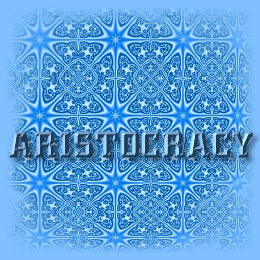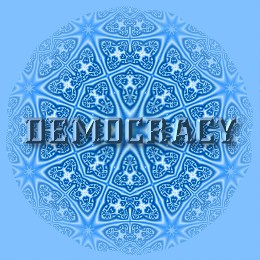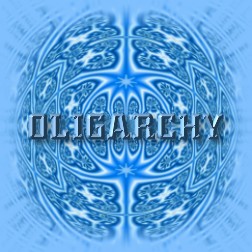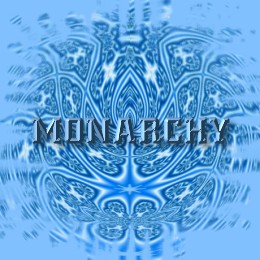|
This music seemed so appropriate when thinking
Confucianism ARISTOCRACY Athens, before the period of the Persian wars of the 5th century BC, and Sparta, during practically its entire history, were aristocracies. The same was true of Rome during the period of the Republic, lasting from the 6th to the 1st century BC. During the Middle Ages no true aristocracy existed, for although political power reposed in the hands of a few, each feudal lord was sole master in his own domain. In England, the government from the accession of the house of Hannover in 1714 through the 19th century, although parliamentary in form, was in fact an aristocracy, since king and Parliament alike were under the control of a few great Whig families. At present the term aristocracy is used loosely and in a great variety of combinations to denote a select few with superiority in various categories, for example, an aristocracy of birth, of wealth, or of intellect. In the U.S. we have an Oligarchy. This is so apparent by the way our leader keep trying to draw the American public back into Fear, Uncertainty and Doubt-FUD, to promote their power over the people. In the process of this pursuing power, the Bush administration has destroyed our economy. We knew prior to the WTC incident about the threat. Someone decided it would provide the impetus for a war and let it go. They didn't know that so many would die. They didn't know their would be so many planes at once. They though a few would get killed in the planes. They mostly likely figured it would be like when that plane flew into the Empire State Building in 1945 killing only 14 people. Why? "When the tyrant has disposed of foreign enemies by conquest or treaty, and there is nothing to fear from them, then he is always stirring up some war or other, in order that the people may require a leader."
It's all so elementary. They do it in corporations too. They use this to get people to work more for less money. I was even in one of my college text books. So after Microsoft--The Velvet Sweat Shop--vanquished all their enemies and became a monopoly, they needed to create a new war. And they did--Linux. Is Linux a real threat? NO. And when the employees realize this they ware going to want more money instead of these NOW worthless stock options. This is just going to happen. They may even organize into a Union to fight the bosses who are making more than the whole group they are managing even with the stock down due to these options plans. Bill Neukom lost Billions of employee stock options with the mismanagement of the antitrust case, yet look at how he was rewarded! These are only one year reports. Last years was just as bad. It's also very obvious that he was essentially fired--forced to resign last fall. After all, it was really the contracts that destroyed Microsoft in court--not of handed statements made in e-mail. And getting caught submitting false evidence didn't help much either. :-) What were they thinking? He is now going to work for Preston Gates and Ellis, the company that he has used to attack me. I have never understood why... Ex-Microsoft lawyer returns to old firm Yes Bill, I have an intense
relationship with my lawyer too! Bureaucracy, personnel and administrative structure of an organization. Business, labor, religious, educational, and governmental systems depend on a large workforce arranged in a hierarchy to carry out specialized tasks based on internal rules and procedures. The term is used mostly in referring to government administration, especially regarding officials in the federal government and civil service. It is often used derogatorily to suggest waste, inefficiency, and red tape. In a more important sense, governmental systems depend on bureaucracy, without which no modern government can function. A hindrance to development in some nations has been the lack of large-scale organizational techniques. The U.S. federal bureaucracy is the result of almost two centuries of tinkering and compromise. During the early days, executives were recruited mainly from an educated class interested in a long-term career in government. In 1820 Congress imposed a 4-year term for federal administrators, leading to rapid turnover and the beginning of a spoils system that allocated jobs to political supporters of the party in power.
The Pendleton Act of 1883 created a competitive civil service, dedicated to professionalism and nonpartisanship. During the 20th century, as these attributes of political independence took hold, the civil service came under fire for being insufficiently responsive to Congress and the president. At the same time, critics complained about its bureaucratic aspects. In 1978 Congress passed the Civil Service Reform Act, which replaced the Civil Service Commission with the Office of Personnel Management, under closer control of the president. The act also established the Senior Executive Service to provide presidents with greater discretion in reassigning top officials to various departments and agencies.The generalization that government bureaucracy is anonymous and unaccountable does not always accord with facts. Federal officials in field offices around the nation operate close to the public. Various statutes require broad representation within the executive branch of different social and economic interests, geographical units, political parties, and minority groups. The administrative process of the federal government is purposely designed to encourage participation by the public, private interest groups, and local officials. Bureaucracy then need not be viewed as an impediment to efficient government operation. A responsible and an effective bureaucracy is important to any democratic system. Contributed By: Louis Fisher Art, a disciplined activity that may be limited to skill or expanded to include a distinctive way of looking at the world. The word art is derived from the Latin ars, meaning "skill." Art is skill at performing a set of specialized actions, as, for example, the art of gardening or of playing chess. Art in its broader meaning, however, involves both skill and creative imagination in a musical, literary, visual, or performance context. Art provides the person or people who produce it and the community that observes it with an experience that might be aesthetic, emotional, intellectual, or a combination of these qualities. Fine Arts and Decorative Arts Traditionally, in most societies, art has combined practical and aesthetic functions. In the 18th century in the West, however, a more sophisticated public began to distinguish between art that was purely aesthetic and art that was also practical. The fine arts (French beaux arts)ˇincluding literature, music, dance, painting, sculpture, and architectureˇare concerned primarily with aesthetics. The decorative or applied arts, such as pottery, metalwork, furniture, tapestry, and enamel, are often useful arts and for a time were demoted to the rank of crafts. Because the Őcole des Beaux-Arts in Paris taught only the major visual arts, the term art was sometimes narrowed to mean only drawing, painting, architecture, and sculpture. Since the mid-20th century, however, greater appreciation of non-Western and folk traditions and of individual work in a mechanized society has tended to blur the old distinction. Both categories are becoming valued as art.FASCISM Fascist at Microsoft and in the US n are pushing the Chinese into a cold war with the US. Tiananmen Movement is over. Believe me when I say: "A lot of Chinese in America hate you." You are arrogant Fascist and it shows. The whole world can see it and that is very dangerous. there are also Chinese among us that love what we stand for and want to bring it to China. Problem is, who is who? Well, we don't know so maybe we should try to be nice to everyone, regardless of their sex, race, religion or politics. STOP THIS WAR! We can write a similar article about the problems with Arabs and the Americans. Engineering A
Nation Through Fascistic Aesthesis Fascism is a very dangerous thing in any free thinking and creative society. In the USA and most of the world, it's becoming increasingly popular. We must never forget who this concept brought on WWII. I was once asked by an upper level IBM executive what I believed was wrong at Microsoft. Well, the first time I was on campus in 1988 it was very apparent that it was a cultural and socially engineered place with water falls, art all over the walls, a lake and the wonderful winding paths and the windows logos and Microsoft T-shirts on all. The company was culturally engineered just as IBM was to be Fascist. They were all programmed. But in the review of what I've observed over the past 20 years, the USA and in fact most of the modern world have taken to Fascism in an attempt to squeeze the dollar out of the consumer and work out of the worker. But it's more noticeable in places like IBM, Oracle and Microsoft(gone) I think. It's especially bad when you have one leader--like Saddam Hussein or Bill Gates (gone). We use to call Pam Edstrom the Microsoft "Spin Doctor." Well that was true. Yep, more like spider webs. Some of us local artist were having a pretty good time watching these women totally mess up Microsoft. She turned you into a FROG! I've never seen anything so stupid in my life. Now we have Butterflies? Who does the marketing over there? Check out the patters on these pages. There is a reason. It's about breaking the spell. Here is one feminist fascist definition of what she is. The employee is so brain washed to believe in the product that they make, dress codes they wear, corporate chants and behaviors they loose their ability to creatively think. This thinking took IBM down for quite a long time. We all need that bit of grunge in society to be individuals and creative in our thinking. When the whole point of a business is to market intellectual product this Fascism always destroys you in the end. Feminism with their push up bras, mini skirts, thongs, false nails and hip hugging jeans really make me laugh. It's all a uniform. Your in the military now. The music on this page is from Edward Scissors Hands for a very good reason girls. And you don't get to think when you are in military garb. It's the rise in Fascism that has us on the brink of war right now. Hey, those Iraqi women don't wear the right uniform--not thong or false nails? You bet. Fascism in Europe and throughout the world is the biggest reason we will end up with a Third World War. We are not thinking critically about this. We are so programmed to our own Fascisms that we can't think creatively as a nation either. This web site has Changed. Art and Science Both art and science require technical skill. Both artist and scientist try to create order out of the seemingly random and diverse experiences of the world. Both try to understand and appreciate the world and to convey their experience to others. However, an essential difference exists: The scientist studies quantitative sense perceptions in order to discover laws or concepts that are universally true. The artist selects qualitative perceptions and arranges them to express personal and cultural understanding. Whereas further investigation may cause a scientific law to be invalidated, a work of artˇdespite changes in the artist's view or the public tasteˇhas permanent validity as an aesthetic statement at a particular time and place. Aesthetics, branch of philosophy concerned with the essence and perception of beauty and ugliness. Aesthetics also deals with the question of whether such qualities are objectively present in the things they appear to qualify, or whether they exist only in the mind of the individual; hence, whether objects are perceived by a particular mode, the aesthetic mode, or whether instead the objects have, in themselves, special qualitiesˇaesthetic qualities. Philosophy also asks if there is a difference between the beautiful and the sublime.Criticism and the psychology of art, although independent disciplines, are related to aesthetics. The psychology of art is concerned with such elements of the arts as human responses to color, sound, line, form, and words and with the ways in which the emotions condition such responses. Criticism confines itself to particular works of art, analyzing their structures, meanings, and problems, comparing them with other works, and evaluating them.The term aesthetics was introduced in 1753 by the German philosopher Alexander Gottlieb Baumgarten, but the study of the nature of beauty had been pursued for centuries. In the past it was chiefly a subject for philosophers. Since the 19th century, artists also have contributed their views.Classical Theories The first aesthetic theory of any scope is that of Plato, who believed that reality consists of archetypes, or forms, beyond human sensation, which are the models for all things that exist in human experience. The objects of such experience are examples, or imitations, of those forms. The philosopher tries to reason from the object experienced to the reality it imitates; the artist copies the experienced object, or uses it as a model for the work. Thus, the artist's work is an imitation of an imitation.Aesthetics and Art Traditional aesthetics in the 18th and 19th centuries was dominated by the concept of art as imitation of nature. Novelists such as Jane Austen and Charles Dickens in England and dramatists such as Carlo Goldoni in Italy and Alexandre Dumas fils (the son of Alexandre Dumas p╦re) in France presented realistic accounts of middle-class life. Painters, whether neoclassical, such as Jean-Auguste-Dominique Ingres, romantic, such as Eug╦ne D╚lacroix, or realist, such as Gustave Courbet, rendered their subjects with careful attention to lifelike detail.In traditional aesthetics it was also frequently assumed that art objects are useful as well as beautiful. Paintings might commemorate historical events or encourage morality. Music might inspire piety or patriotism. Drama, especially in the hands of Dumas and the Norwegian Henrik Ibsen, might serve to criticize society and so lead to reform.In the 19th century, however, avant-garde concepts of aesthetics began to challenge traditional views. The change was particularly evident in painting. French impressionists, such as Claude Monet, denounced academic painters for depicting what they thought they should see rather than what they actually sawˇthat is, surfaces of many colors and wavering forms caused by the distorting play of light and shadow as the sun moves.In the late 19th century, postimpressionists such as Paul C╚zanne, Paul Gauguin, and Vincent van Gogh were more concerned with the structure of a painting and with expressing their own psyche than with representing objects in the world of nature. In the early 20th century this structural interest was developed further by cubist painters such as Pablo Picasso, and the expressionist concern was reflected in the work of Henri Matisse and other fauves and by the German expressionists such as Ernst Ludwig Kirchner. The literary aspects of expressionism can be seen in the plays of August Strindberg, a Swede, and Frank Wedekind, a German.Closely connected with these relatively nonrepresentational approaches to art was the principle of "art for art's sake," which was derived from Kant's view that art has its own reason for being. The phrase was first used by the French philosopher Victor Cousin in 1818. This doctrine, sometimes called aestheticism, was espoused in England by the critic Walter Horatio Pater, by the Pre-Raphaelite painters, and by the expatriate American painter James Abbott McNeill Whistler. In France it was the credo of such symbolist poets as Charles Baudelaire. The "art for art's sake" principle underlies most of avant-garde Western art of the 20th century.Major Contemporary Influences Four philosophers of the late 19th and early 20th centuries have been the primary influences on present-day aesthetics. In France Henri Bergson defined science as the use of intelligence to create a system of symbols that supposedly describes reality but actually falsifies it. Art, however, is based on intuition, which is a direct apprehension of reality unmediated by thought. Thus art cuts through conventional symbols and beliefs about people, life, and society and confronts one with reality itself.In Italy the philosopher and historian Benedetto Croce also exalted intuition, but he considered it the immediate awareness of an object that somehow gives that object form. It is the apprehension of things before one reflects about them. Works of art are the expression, in material form, of such intuitions; but beauty and ugliness are not qualities of the works of art but qualities of the spirit expressed intuitively in these works of art.The American philosopher and poet George Santayana argued that when one takes pleasure in a thing the pleasure may be regarded as a quality of the thing itself, rather than as a subjective response to it. Just as one may characterize some human act as good in itself, instead of calling it good merely because one approves it, so one may say that some object is beautiful, not merely that one's aesthetic delight in its color and form leads one to call it beautiful.John Dewey , the American educator and philosopher, viewed human experience as disconnected, fragmentary, full of beginnings without conclusions, or as experiences deliberately manipulated as means to ends. Those exceptional experiences that flow from their beginnings to consummations are aesthetic. Aesthetic experience is enjoyment for its own sake, is complete and self-contained, and is terminal, not merely instrumental to other purposes.Marxism and Freudianism Two powerful movements, Marxism in the fields of economics and politics and Freudianism in psychology, have rejected the art-for-art principle and reasserted art's practical uses. Marxism treats art as an expression of the underlying economic relations in society. Marxist proponents maintain that art is great only when it is "progressive," that is, when it supports the cause of the society under which it is created. Sigmund Freud believed the value of art to lie in its therapeutic use: It is by this means that both the artist and the public can reveal hidden conflicts and discharge tensions. Fantasies and daydreams, as they enter into art, are thus transformed from an escape from life into ways of meeting it. In the surrealist movement in painting and poetry, the unconscious is used as a source of material. The stream-of-consciousness technique of fiction, notably in the novels of the Irish writer James Joyce, was derived not only from Freud's work but partly from The Principles of Psychology (1890) by the American philosopher and psychologist William James and partly from the French novel We'll to the Woods No More (1887; translated 1957) by Edouard Dujardin.Existentialism More recently, the French philosopher and writer Jean-Paul Sartre advocated a form of existentialism in which art is seen as an expression of the freedom of the individual to choose, and as such demonstrates the individual's responsibility for his or her choices. Despair, as reflected in art, is not an end but a beginning, because it eradicates the guilts and excuses from which people ordinarily suffer, thus opening the way for genuine freedom.Academic Controversies Academic controversies of the 20th century have revolved about meaning in art. The British critic and semanticist I. A. Richards claimed that art is a language. He asserted that two types of language exist: the symbolic, which conveys ideas and information; and the emotive, which expresses, evokes, and excites feelings and attitudes. He regarded art as emotive language, giving order and coherence to experience and attitudes, but containing no symbolic meaning.Richards's work was important also for its use of psychological techniques in studying aesthetic reactions. In Practical Criticism (1929) he described experiments revealing that even highly educated people are conditioned by their education, by handed-down opinion, and by other social and circumstantial elements in their aesthetic responses. Other writers have commented on the conditioning effects of tradition, fashion, and other social pressures, noting, for example, that in the early 18th century the plays of William Shakespeare were viewed as barbarous and Gothic art as vulgar. Growing interest in aesthetics is revealed by the establishment of the periodicals Journal of Aesthetics and Art Criticism, founded in the United States in 1941; Revue d'Esth╚tique, founded in France in 1948; and the British Journal of Aesthetics, founded in 1960. Contributed By: Arthur C. Danto
The US is an Oligarchy in business and government.
Harassment and discrimination against artist in Seattle This seems to be due to computer idiots who think they are better because they can use a computer. Why did the dot-coms go bust? Because there was no content. The artist went on strike and in a show of solidarity, pulled all the art--music, visual art, drama, etc. off the Internet. Until we get paid for our work these techies have nothing. It was like someone pulled the plug on the INTERNET! You bet and it was totally organized. All the greedy people, where do
they all come from I look at all the greedy
people Love to all the children,
|




